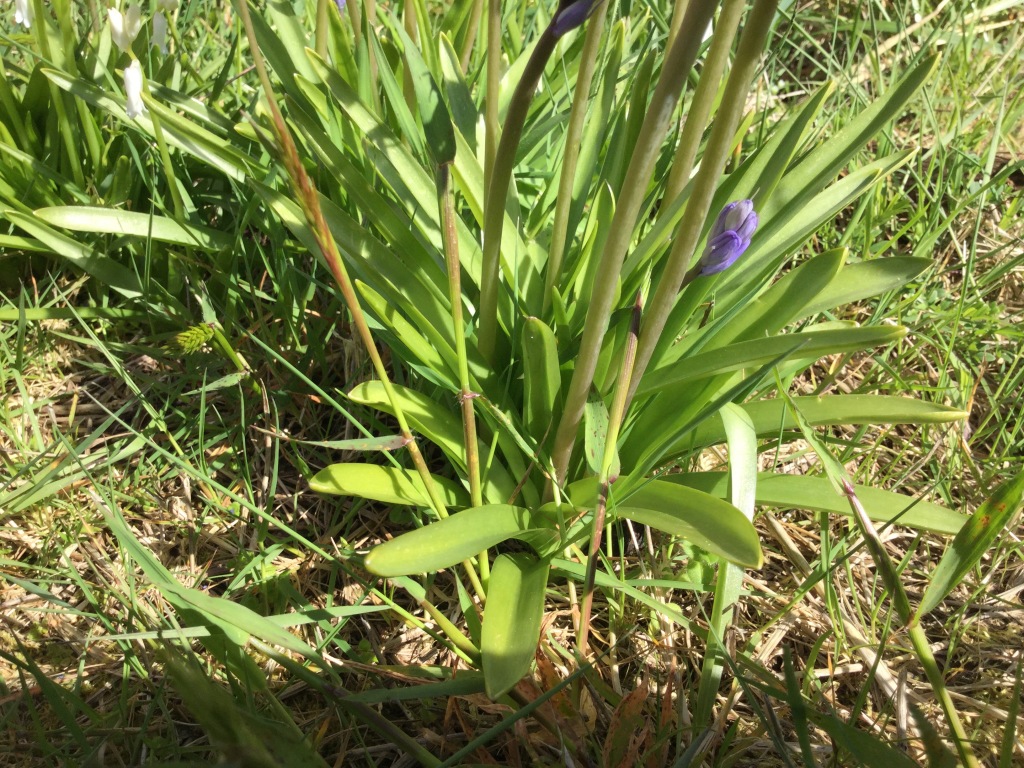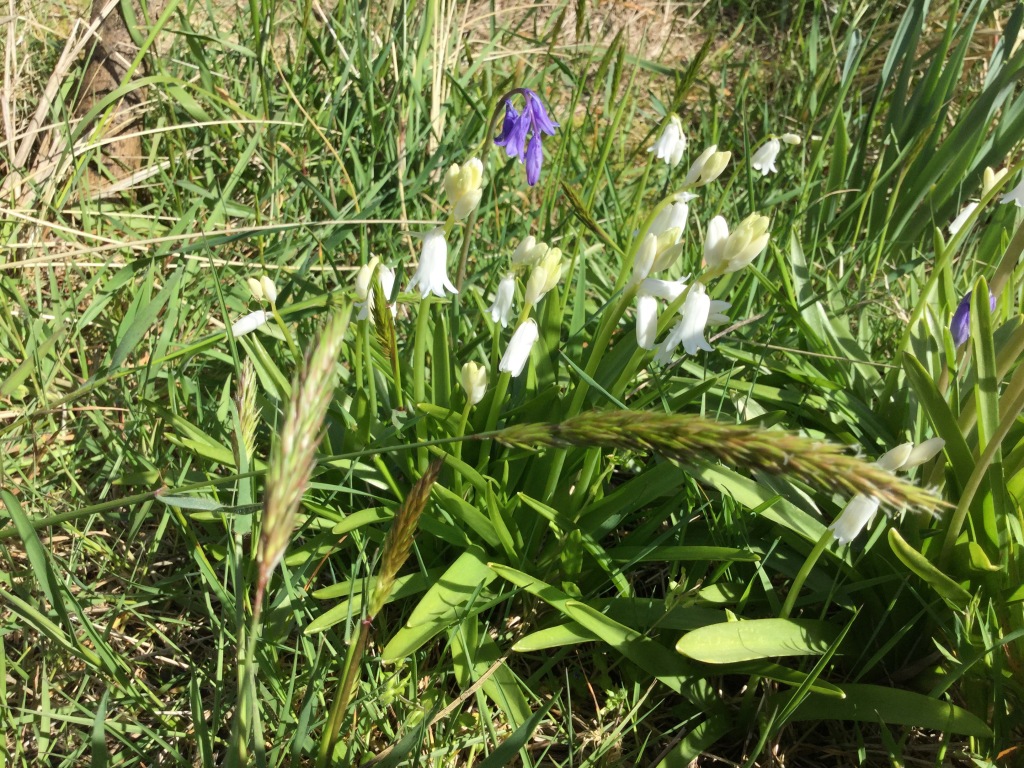The mighty Columbia River defines the north edge of Fort Clatsop State Park, which is where I happened across this charming cluster of white and purple flowers growing in the duney shoreline. I recognized them immediately but couldn’t remember their name and thought they might be native. Not so much. English and Spanish bluebells cause gardeners all over the region heartburn; they are one of the prettier invasive species known to consume the region’s ecology.
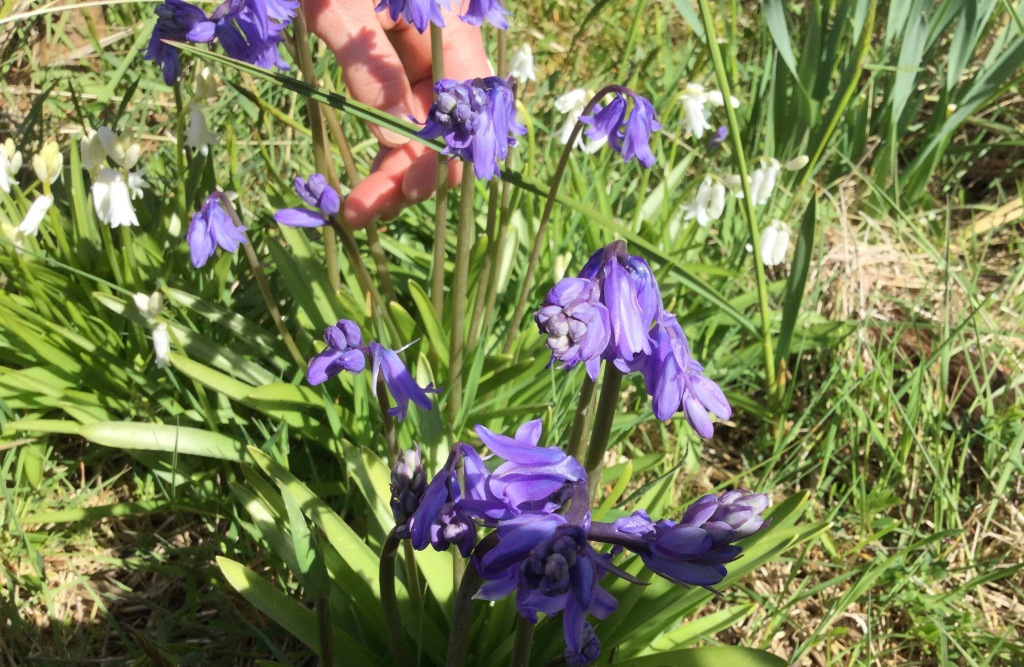
Identification required an unorthodox method: Facebook. Recently, I joined a group named Plant identification and discussion and got a lead within a few moments of posting. It took a bit of digging to confirm, with confirmation ultimately coming from a local, frustrated columnist.
At least two invasive species of bluebells are present in the Pacific Northwest. Spanish bluebells flowers bloom in an upright pattern and don’t have much of a scent, whereas English bluebells droop from the stem and emit a pleasing aroma. Additionally, there are few native species that bear almost no resemblence to this specimen other than blue, bell-like blooms.
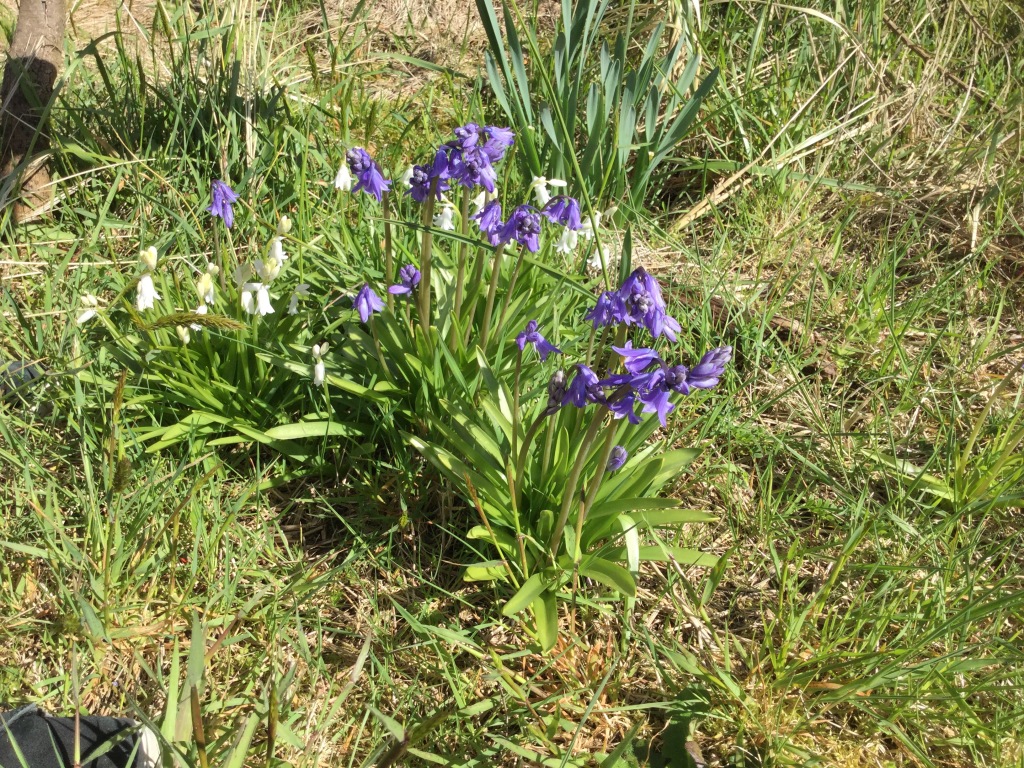 As you can see, these produce droopy little bells, so they are English bluebells. Flower grow above a base of basal, lance-shaped leaves with smooth margins and a width of a thumbnail. They put off a sweet, yet somehow generic, scent — another charactaristic of the English varietal. These stems were approximately eight inches long, hollow, and a little juicy.
As you can see, these produce droopy little bells, so they are English bluebells. Flower grow above a base of basal, lance-shaped leaves with smooth margins and a width of a thumbnail. They put off a sweet, yet somehow generic, scent — another charactaristic of the English varietal. These stems were approximately eight inches long, hollow, and a little juicy.
I’ve got the notion that they are spring bloomers that prefer part-shade conditions, but I did not confirm that today. The specimen I collected have four and eight blooms per stem. It grew in full-sun exposure on a sand dune bordering a freshwater river.
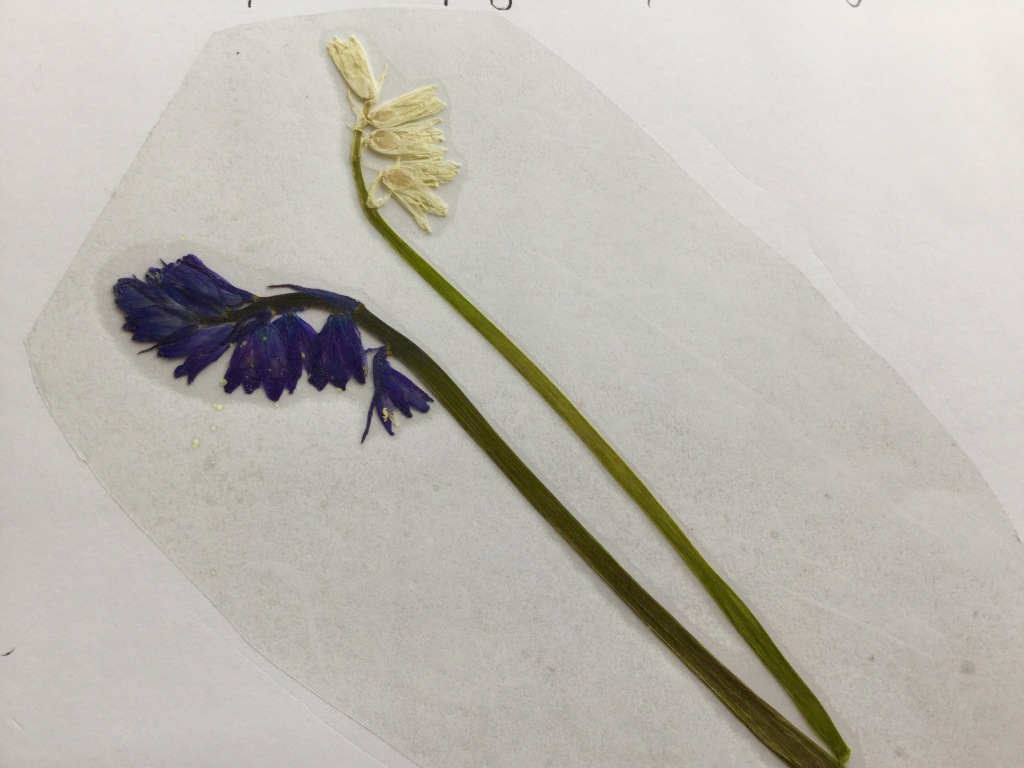 White bluebells are rare, and there are also varietals of pink bluebells, but I saw no pink. Finding white and blue growing together isn’t exactly a unicorn, but blue blossoms predominante the species so it is rare. I love how one blue stem pushed up amongst the white blossoms in this picture.
White bluebells are rare, and there are also varietals of pink bluebells, but I saw no pink. Finding white and blue growing together isn’t exactly a unicorn, but blue blossoms predominante the species so it is rare. I love how one blue stem pushed up amongst the white blossoms in this picture.
Hyacinthoides hispanica (Spanish bluebells): least favorite invasive species. (2012, April 22). Retrieved May 20, 2017, from http://christineinportland.com/2012/04/hyacinthoides-hispanica-spanish-bluebells-invasive-species/
Hyacinthoides non-scripta (L.) Chouard ex Rothm. (n.d.). Retrieved May 20, 2017, from https://plants.usda.gov/core/profile?symbol=hyno
Kym Pokorny | For The Oregonian/OregonLive. (2010, March 20). My weedy bluebells are Spanish not English. Retrieved May 20, 2017, from http://blog.oregonlive.com/kympokorny/2010/03/my_weedy_bluebells_spanish_not.html. The Oregonian via oregonlive.com

